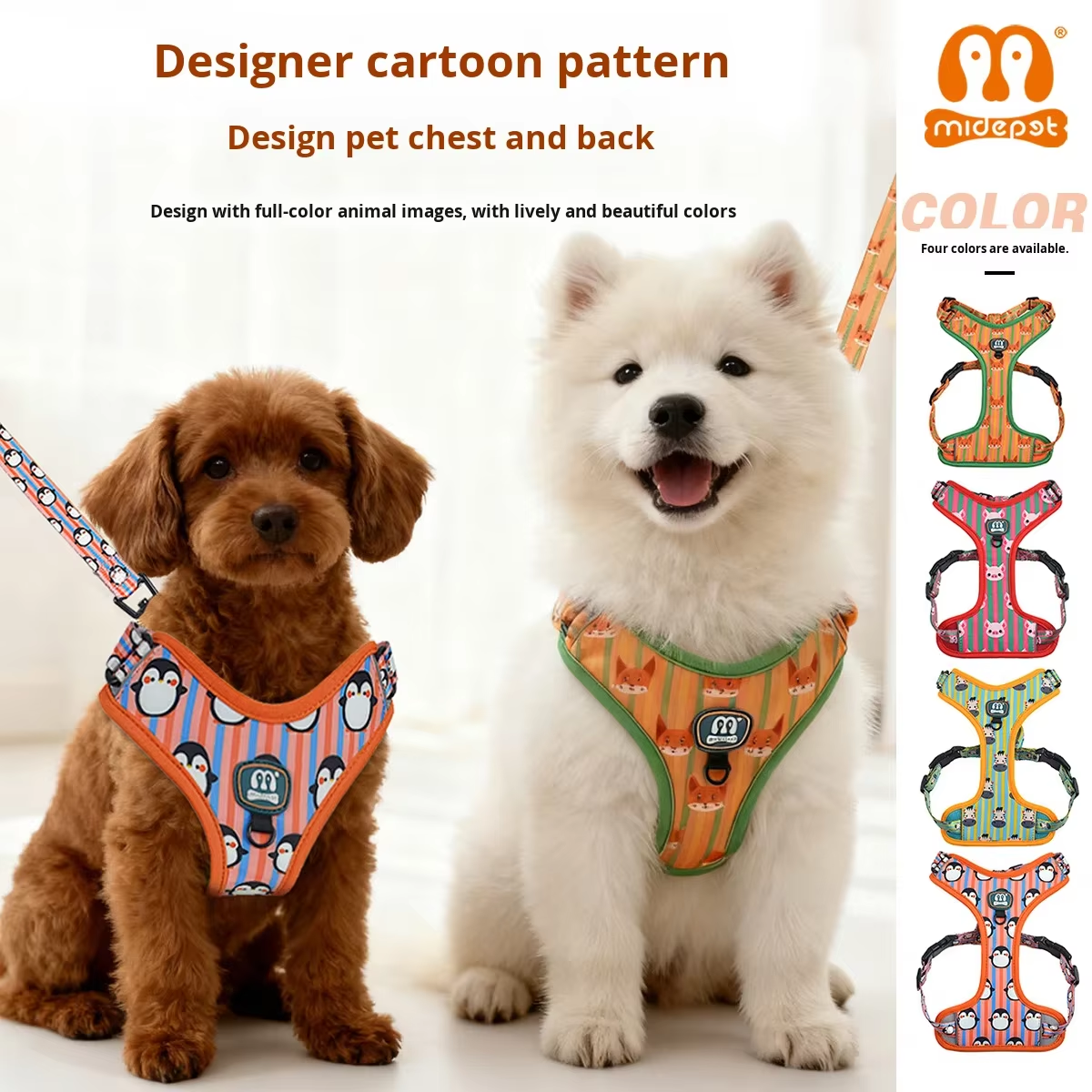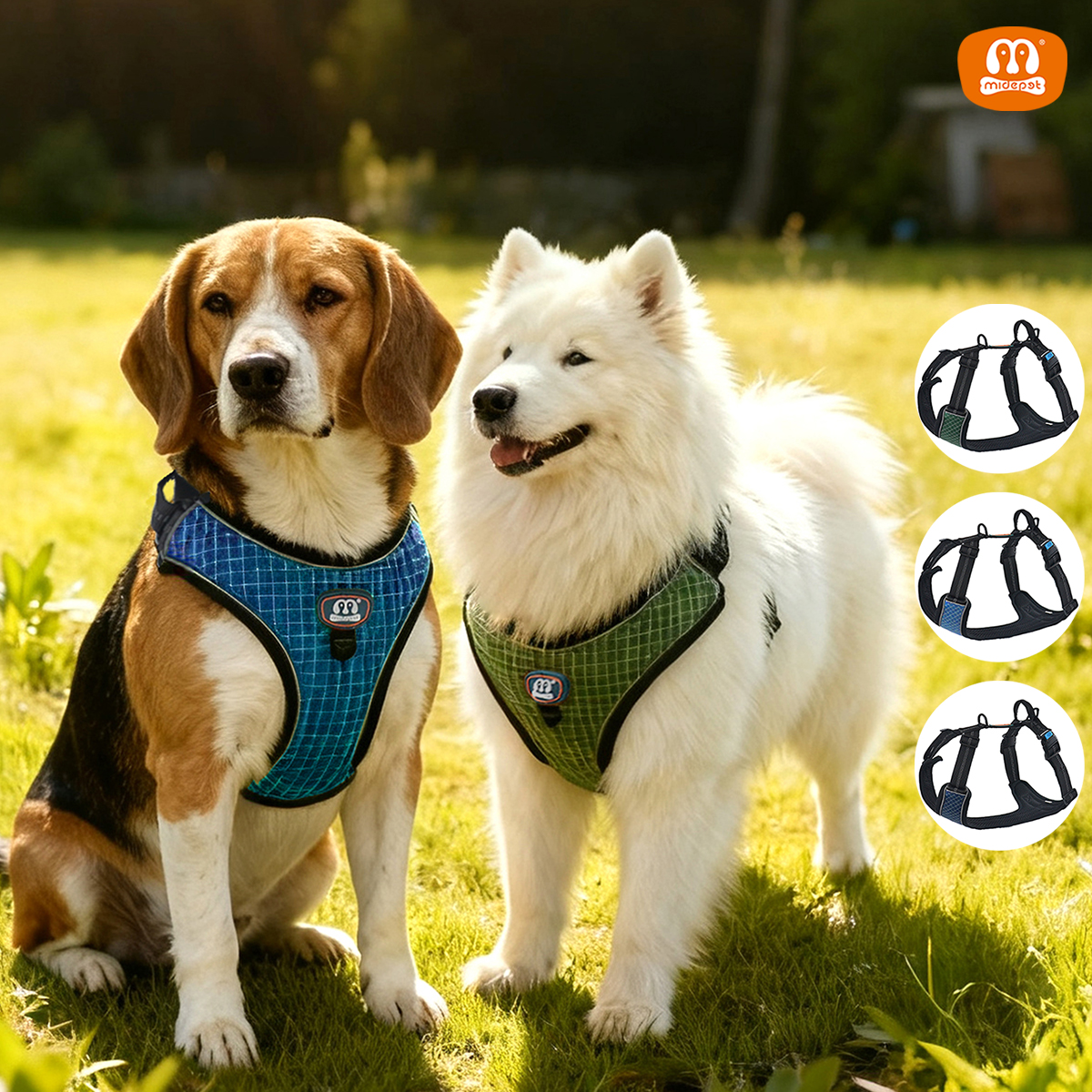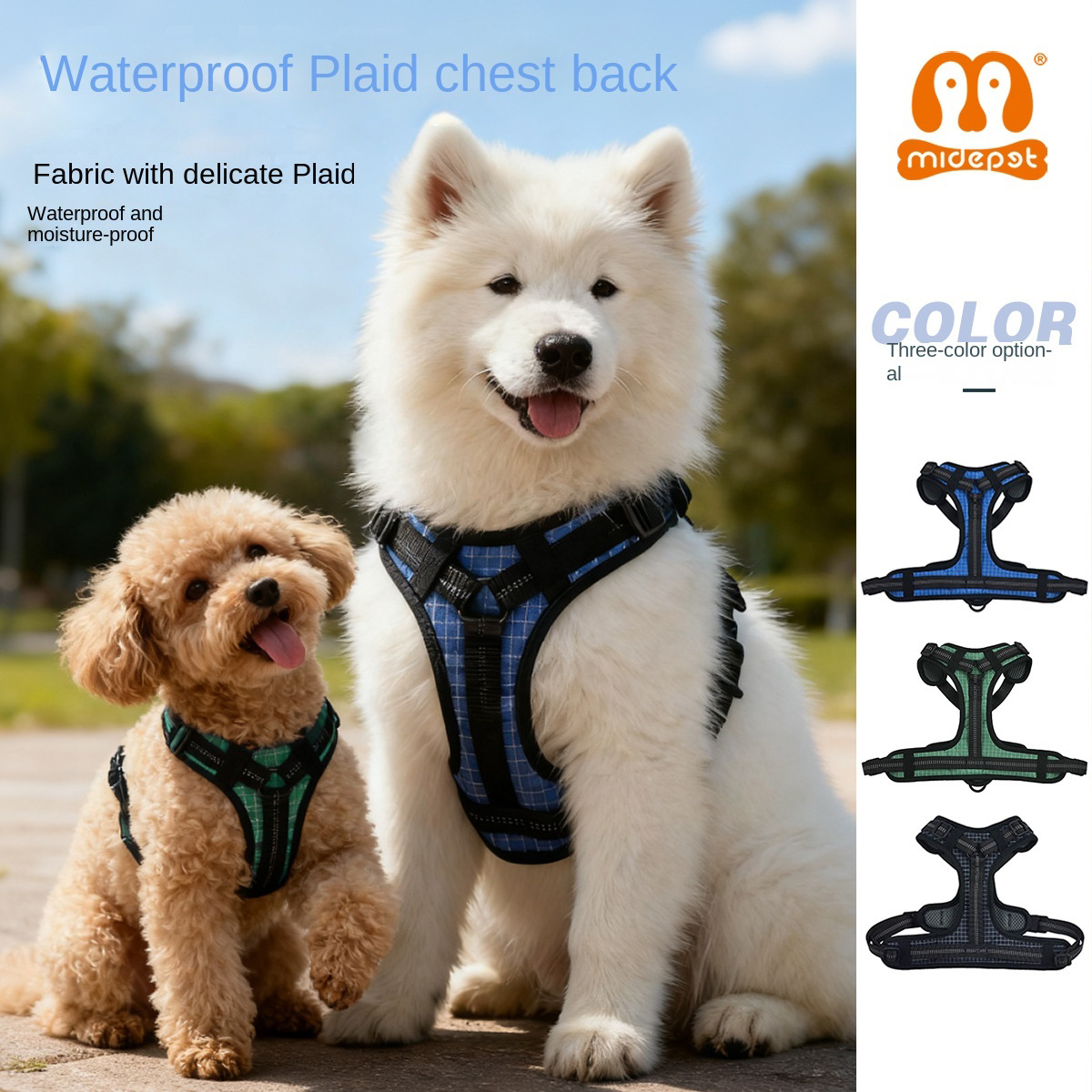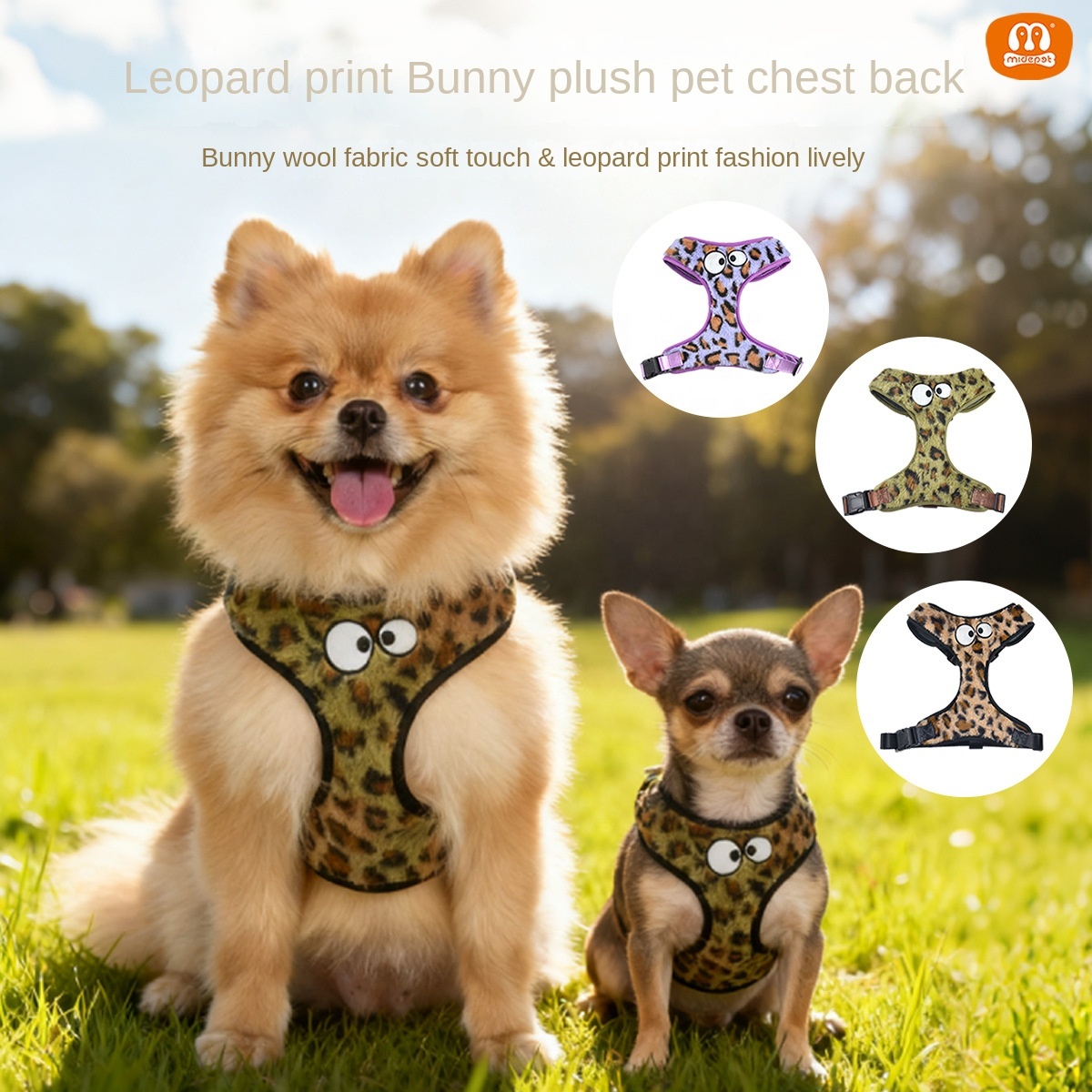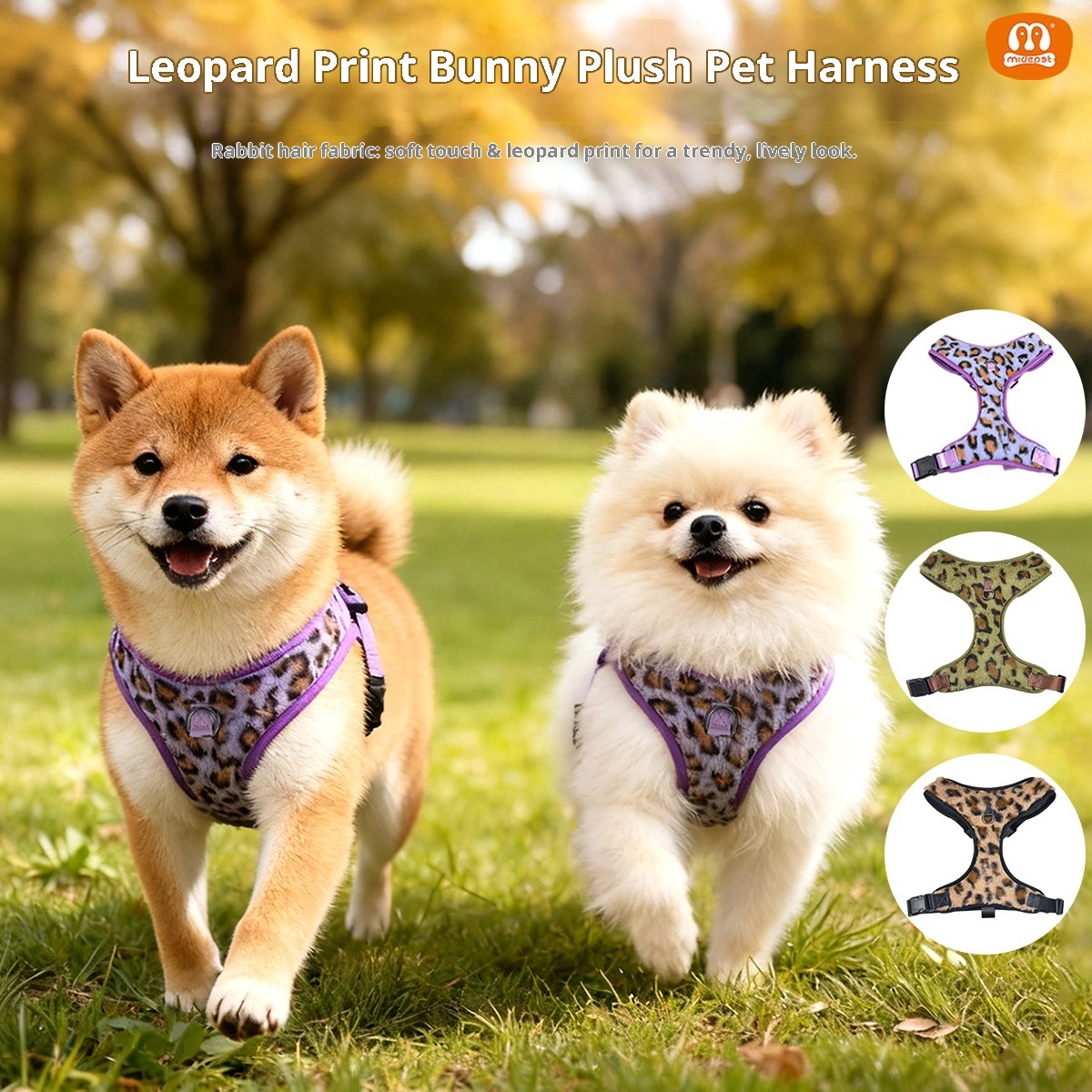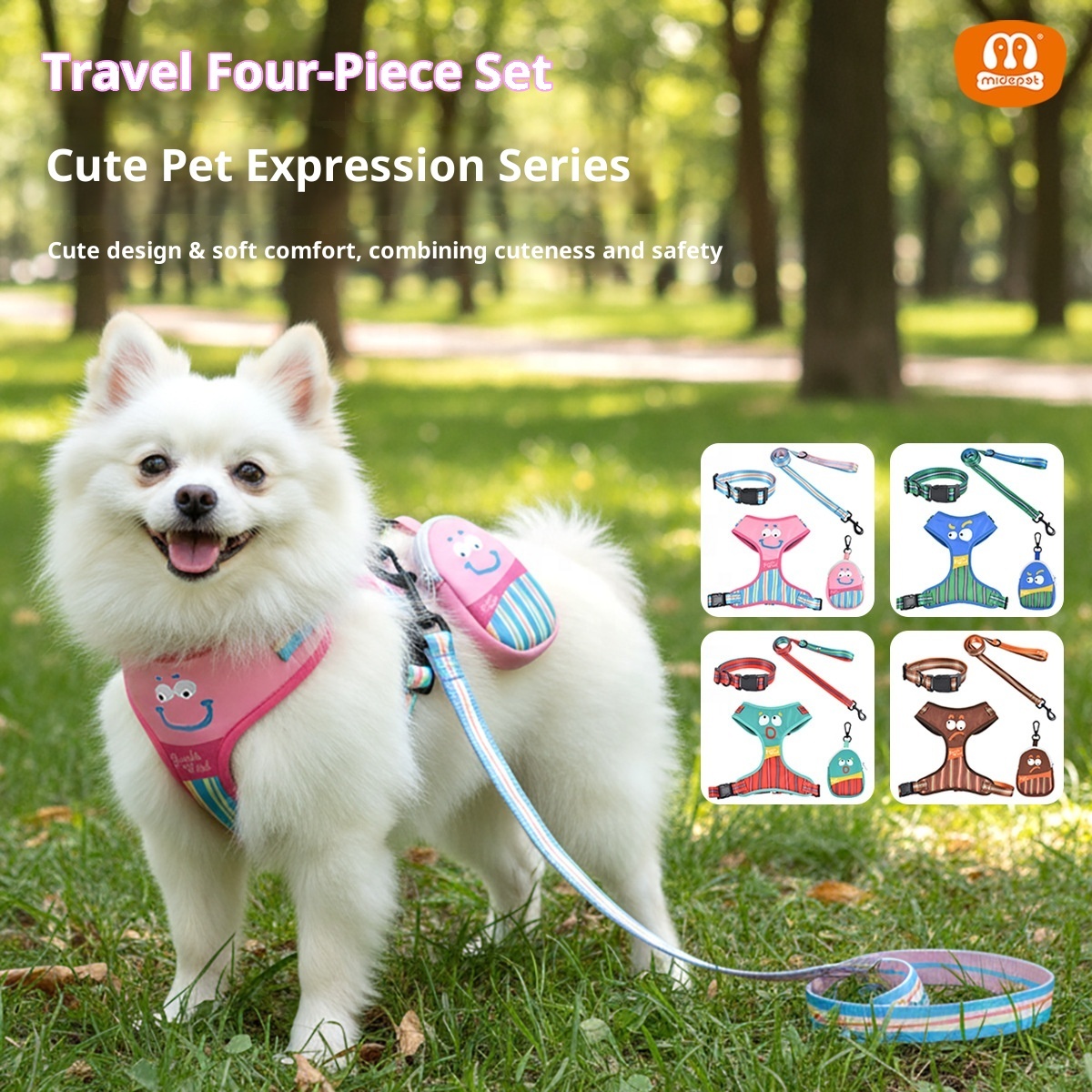Collar vs Harness: Choosing the Right Pet Accessory
Loops vs Chest and Back Straps: Choosing the Right Pet Accessory
Introduction
Dog collars and harnesses are two common choices when selecting accessories for your dog. While both fulfill basic wearing needs, they vary in function and comfort. Understanding the features of both accessories is essential to enhancing your dog's comfort and safety.
Dog Collar
A dog collar is an accessory that goes around your dog's neck and is mainly used for hanging dog tags, traction and everyday wear.
Advantages
Simple and easy to use: dog collars are designed to be simple and easy to put on and take off quickly.
Ideal for everyday wear: it is ideal for everyday use of your dog, especially if you need to hang up a dog tag.
Various styles: there are various materials, designs and colors of dog collars available in the market to meet different individual needs.
Disadvantages.
May put pressure on the neck: dog collars may put some pressure on your dog's neck and are not suitable for prolonged pulling.
Not suitable for training: dog collars have limited effectiveness when training or guiding your dog.

Dog Harness
A dog harness is an accessory that spreads the pressure of your dog's body evenly, usually around the dog's chest and abdomen. It can give your dog more protection and control.
Pros.
Evenly distributes pressure: the harness prevents pressure from being concentrated on the neck, reducing the risk of injury.
Ideal for pulling: this accessory manages pulling forces better, making it ideal for training and walking.
Increased control: offers more control options, especially important for naughty or strong dogs.
Cons
Complicated to wear: the Harness may take some time to adjust and wear.
May not be aesthetically pleasing: some designs may not be as stylish as collars, but comfort and functionality are often more important.
Suitable Scenarios
Scenarios where dog collars are suitable:
Suitable for everyday wear
Suitable for adult or low activity dogs
Harness suitable scenarios:
Suitable for training, walking and running
Suitable for active, strong or large pulling dogs

How to choose
Considerations
Size and breed of dog: different breeds and sizes of dogs adapt differently to collars and harnesses.
Activity level: Dogs with high activity levels may be better suited for harness.
Comfort and safety: Make sure you shop for a product that is comfortable and safe to enhance your dog's experience.
Materials and Design
Collar: Including leather, nylon, fabric and other materials, choosing the right material can improve the comfort.
HARNESS: Common designs include front buckle, back buckle, H-shape, etc. Each design is suitable for different usage needs.
Conclusion
Dog collars and harness have their own advantages and disadvantages. Dog collars are good for everyday wear and simple use, while harnesses are good for scenarios that require better control and comfort. Depending on your dog's specific needs and usage scenarios, choosing the right accessory can greatly enhance your dog's comfort and safety.
Frequently Asked Questions (FAQ)
Which is better for training, a dog collar or a harness?
A harness is usually better for training because it allows for better control of the pull and disperses the pressure.
How do I choose the right collar or harness for my dog?
The choice needs to take into account the size, breed and activity level of your dog, as well as ensuring that the product is comfortable and safe.
Is Harness suitable for all dogs?
Harnesses are suitable for most dogs, especially those that are more active or require more control, but the specific needs and comfort of your dog should still be considered when choosing one.


